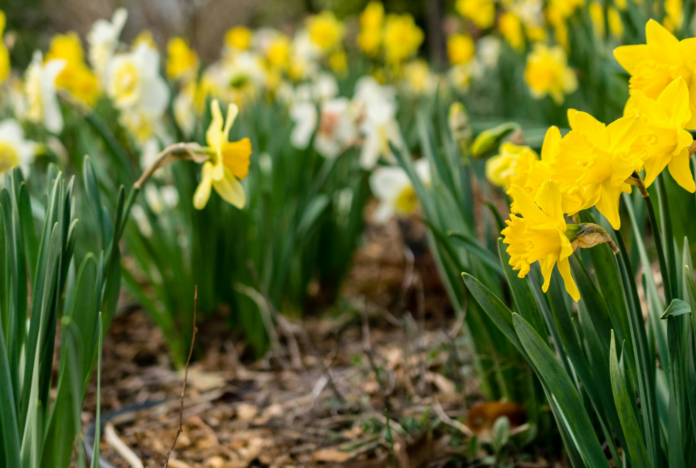Six spring bulbs to keep dogs away from
Dog owners have been issued a warning about six popular spring bulbs that can be poisonous or even fatal to dogs.
With gardeners starting to plant bulbs for spring, garden experts at GardenBuildingsDirect.co.uk have shared six different bulbs that dogs should be kept away from in the garden.
Autumn is the time to be planting spring bulbs before the winter months so that gardens are full of colour come spring time.
But whilst the burst of colour will make the garden look pretty, a lot of people are unaware that spring bulbs can be poisonous, or even fatal in some cases, to dogs.
Even some of our favourite spring bulbs can be poisonous to our furry friends, including daffodils and tulips.
Whilst it may take large amounts of the bulb and plant to be ingested for it to be fatal, some of the more common symptoms that dogs can suffer from include vomiting, diarrhoea and nausea.
A spokesperson at Garden Buildings Direct said: “Spring bulbs are a lovely addition to your garden but it’s important to be aware of the potential dangers they can pose to your dog. Many will plant their spring bulbs in autumn and winter, so it’s important to be aware now of which plants could harm pets.
“Hyacinths, Amaryllis and Daffodils are all hugely popular plants and each one can make your garden look nice and colourful in the spring. But be careful of letting your dogs around them as they all contain toxins which are poisonous.
“As well as being poisonous, some may even be fatal if your dog manages to ingest a large amount. These include Bluebells, Cyclamen and Tulips, so make sure to take extra precautions with these.”
Six spring bulbs that can be poisonous for your dog:
Bluebells
These contain a toxin that can affect a dog’s heart, but would usually result in an upset stomach if your dog ingests any. If large amounts are eaten though it can prove to be fatal. Bluebells are often found in woodland as well so it’s important to keep an eye on your dog when out for a walk.
Daffodils
One of the most common causes of daffodil poisoning in dogs is when they have been able to access the bulbs. Daffodil bulbs contain the most concentrated amount of lycorine, which is an alkaloid that can trigger diarrhoea, vomiting, stomach pain, and even heartbeat irregularities.
Cyclamen
Contains triterpenoid saponins which can cause serious toxic reactions in dogs. Symptoms include salivation, diarrhoea and vomiting, whilst larger ingestions can cause heart rhythm abnormalities, seizures, and even death.
Tulips
Toxins are found in all parts of the plant, but are especially concentrated in the bulb. If your dog consumes any part, particularly the bulb, you should contact a vet immediately. Symptoms can include an elevated heart rate and breathing difficulties in severe cases of poisoning, or if a large amount has been ingested this can also result in sudden death.
Amaryllis
Consuming the bulb can lead to illness varying from moderate to severe, and most canines would need to ingest a considerable amount of bulbs before severe toxicity occurs. But common symptoms to look out for from ingesting Amaryllis are drooling and abdominal discomfort.
Hyacinths
The most common way that dogs are affected by Hyacinth poisoning is by digging up bulbs from the garden when they have been recently planted. Ingesting Hyacinth bulbs does cause instantaneous pain for dogs, which in turn prevents them from being able to eat a toxic amount, but symptoms they may have after consuming it would be nausea, diarrhoea and vomiting.
Help keep news FREE for our readers
Supporting your local community newspaper/online news outlet is crucial now more than ever. If you believe in independent journalism, then consider making a valuable contribution by making a one-time or monthly donation. We operate in rural areas where providing unbiased news can be challenging. Read More About Supporting The West Wales Chronicle























